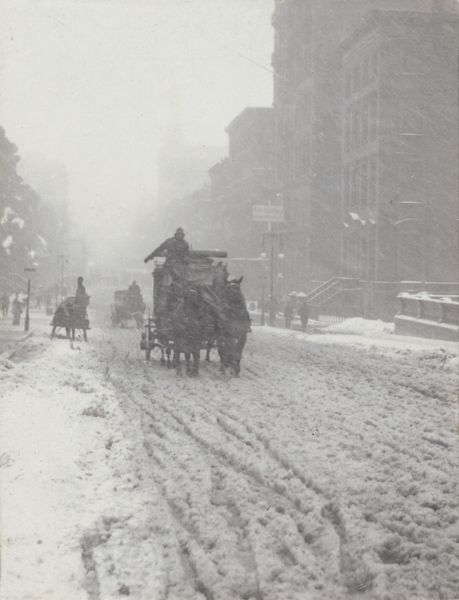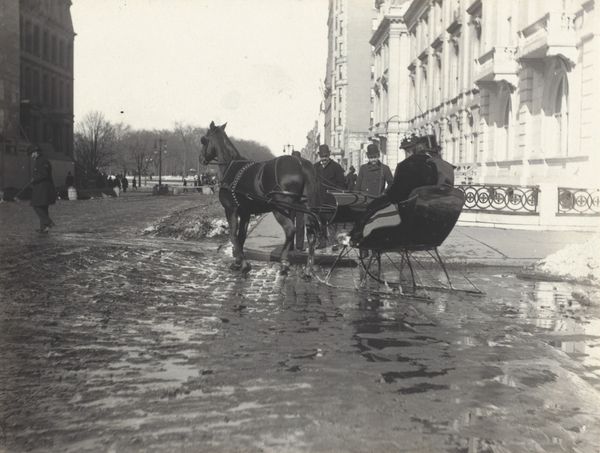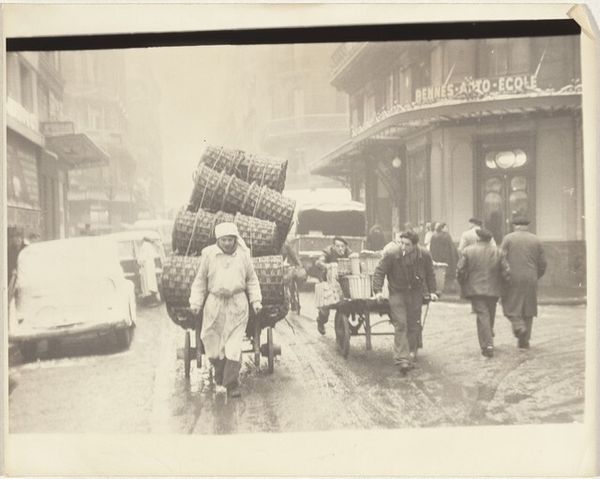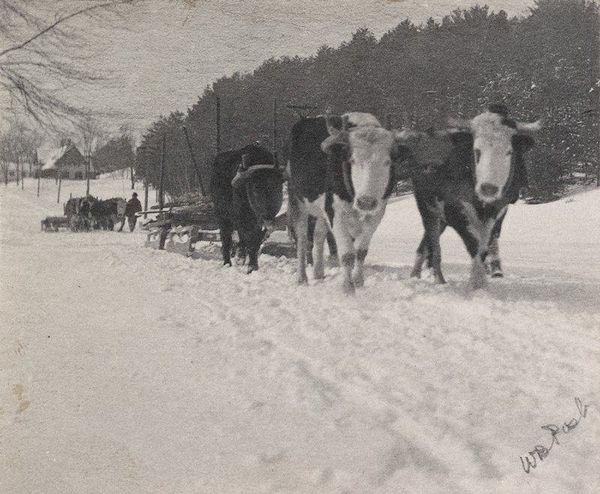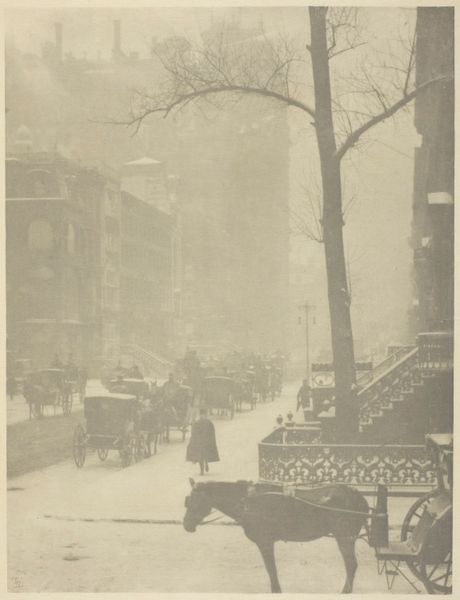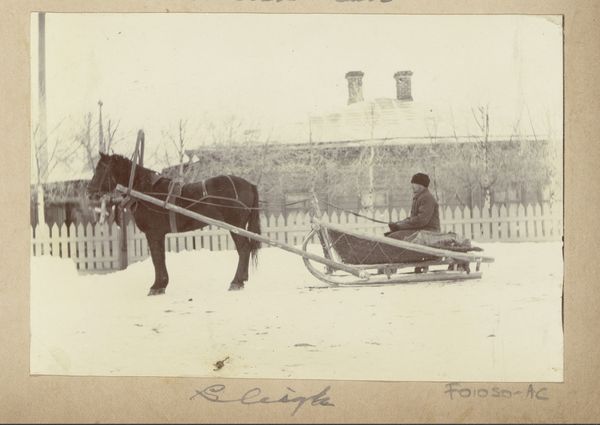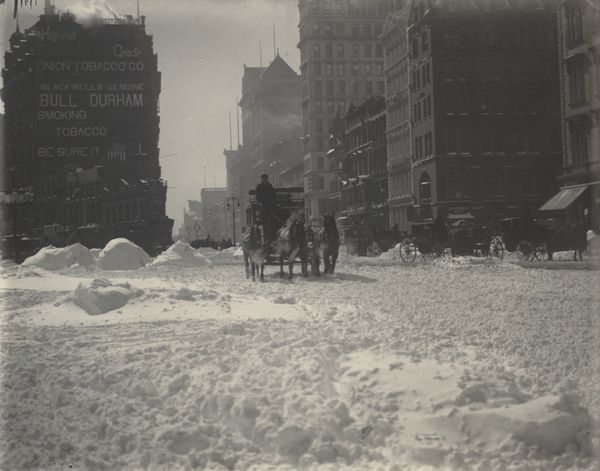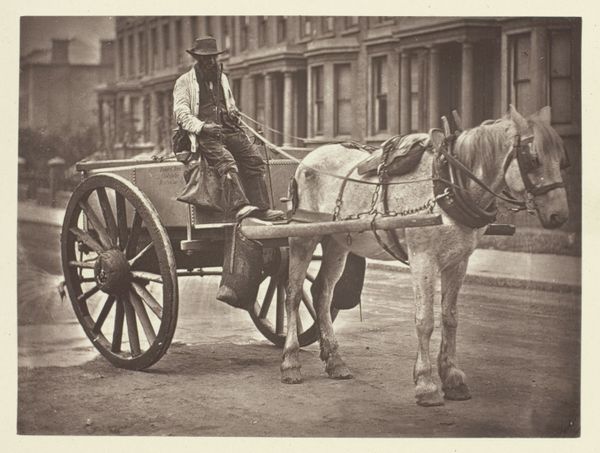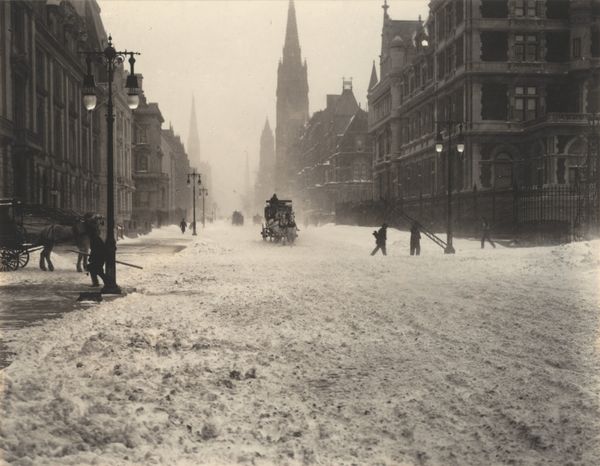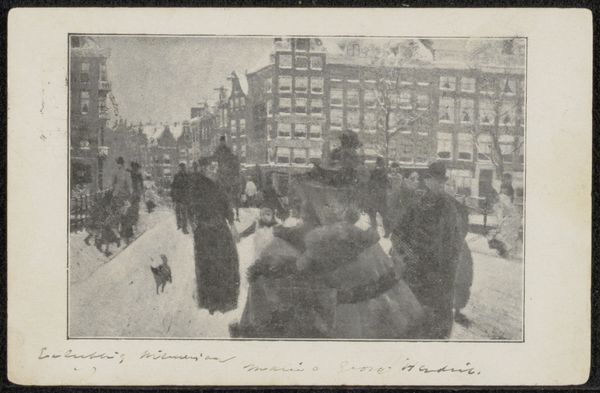
silver, print, paper, photography, albumen-print
#
print photography
#
still-life-photography
#
silver
#
pictorialism
# print
#
wedding photography
#
landscape
#
outdoor photograph
#
paper
#
archive photography
#
street-photography
#
photography
#
united-states
#
cityscape
#
albumen-print
#
realism
Dimensions: 8.8 × 11.3 cm (image/paper/first mount); 31.7 × 25.5 cm (second mount)
Copyright: Public Domain
Editor: We're looking at Alfred Stieglitz's photograph, "The Terminal," likely taken sometime between 1893 and 1939. It’s a silver print showing horses pulling a streetcar through snow. It feels incredibly bleak, like a frozen moment in time. How do you interpret this work? Curator: That bleakness is key. Consider the historical context: rapid urbanization, industrial growth alongside immense poverty, and harsh labor. The horses, juxtaposed with the "Terminal," a symbol of modern transportation, speak volumes. Aren’t they also symbols of exploitation, particularly within the capitalist structures emerging during that period? Editor: Absolutely. The horses seem to be toiling, literally pulling progress. I hadn’t considered the socioeconomic angle so explicitly. Curator: Stieglitz, though often associated with pictorialism which romanticized images, was also deeply interested in documenting modern life, critiquing its impact. This photograph challenges viewers to confront the human and animal costs of so-called progress. Consider whose stories are not being told. Who are these laborers, and what are their experiences? Editor: I see what you mean. The photograph isn't just a pretty picture of a snowy day; it's raising questions about class and labor conditions. The steam rising from the horses is more than just atmospheric. It symbolizes their struggle. Curator: Precisely. It's crucial to consider the broader intersectional narratives at play here. It's about social stratification, about the commodification of labor, and the beginnings of the climate catastrophe facilitated by new transportation industries reliant on exploitation of animal and human resources. Editor: This makes me think about our responsibilities as viewers: to look beyond the surface and consider the difficult questions that the art is asking. Curator: Agreed. It forces us to question, whose reality are we seeing and who is being erased from the narrative? It pushes us to consider labor exploitation then, and now. Editor: Thank you. I’ll definitely carry these thoughts about social context and power dynamics with me moving forward when engaging with other artwork.
Comments
No comments
Be the first to comment and join the conversation on the ultimate creative platform.

